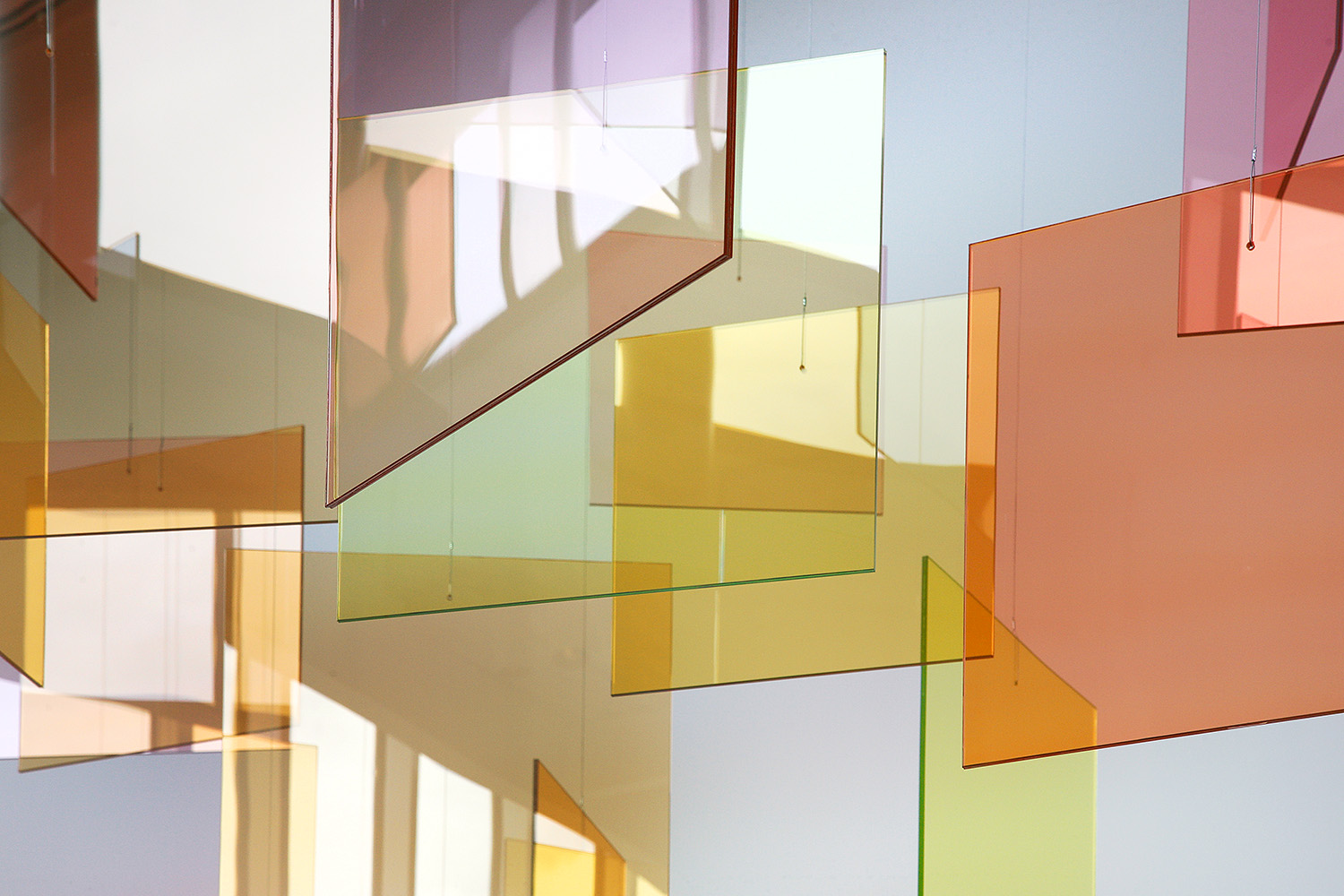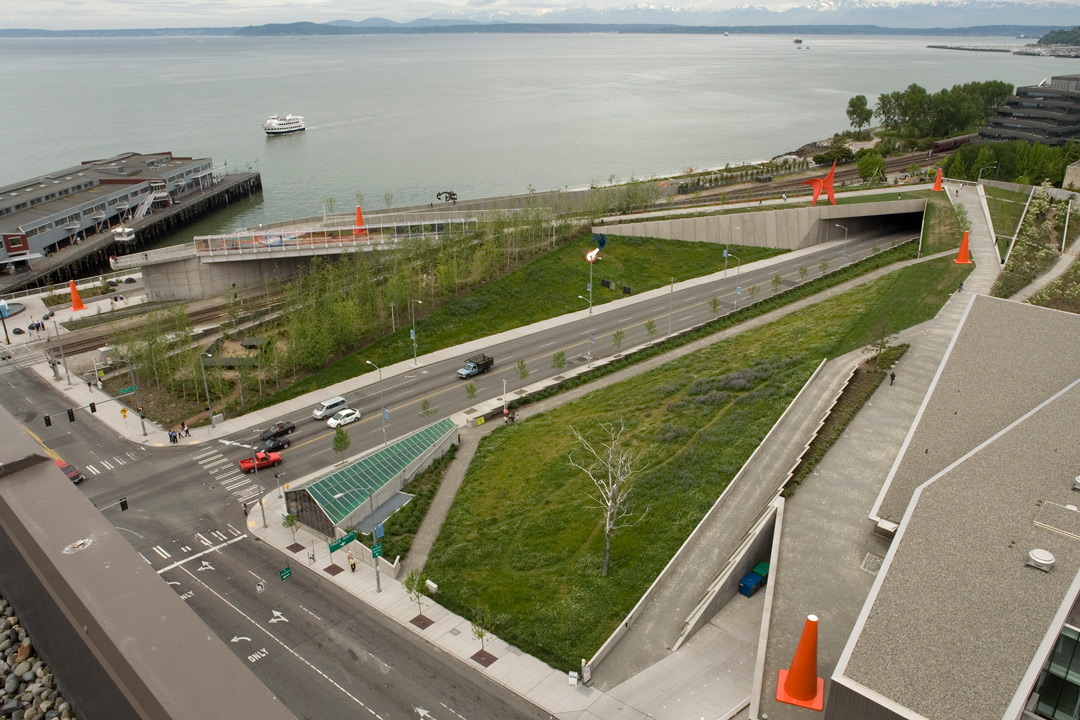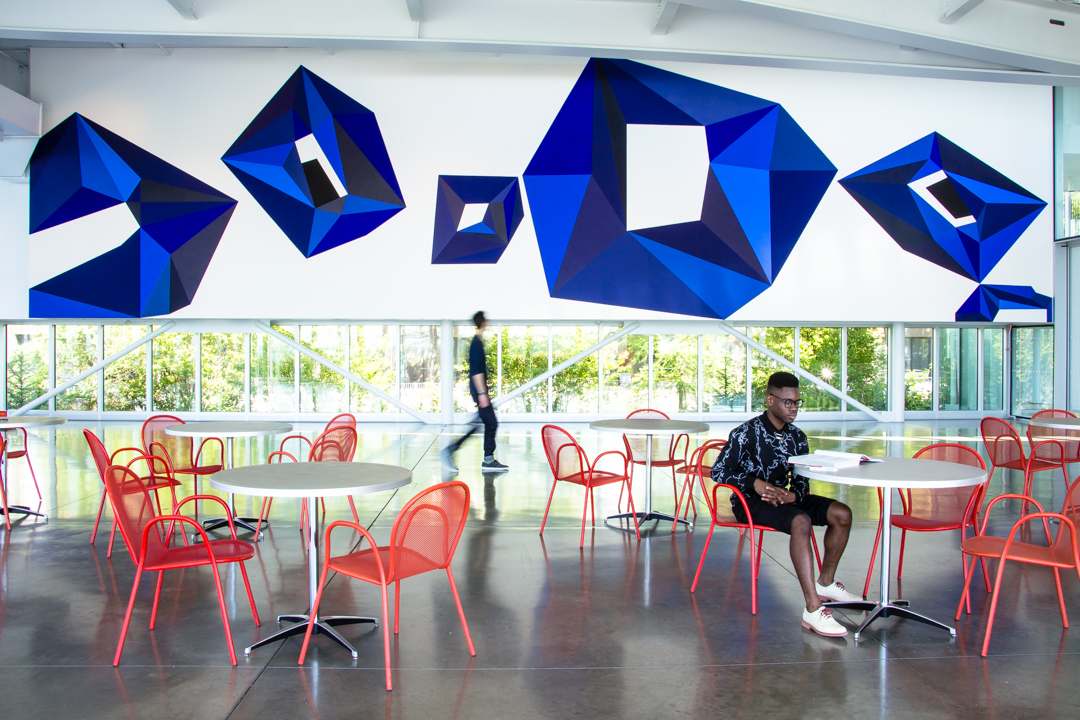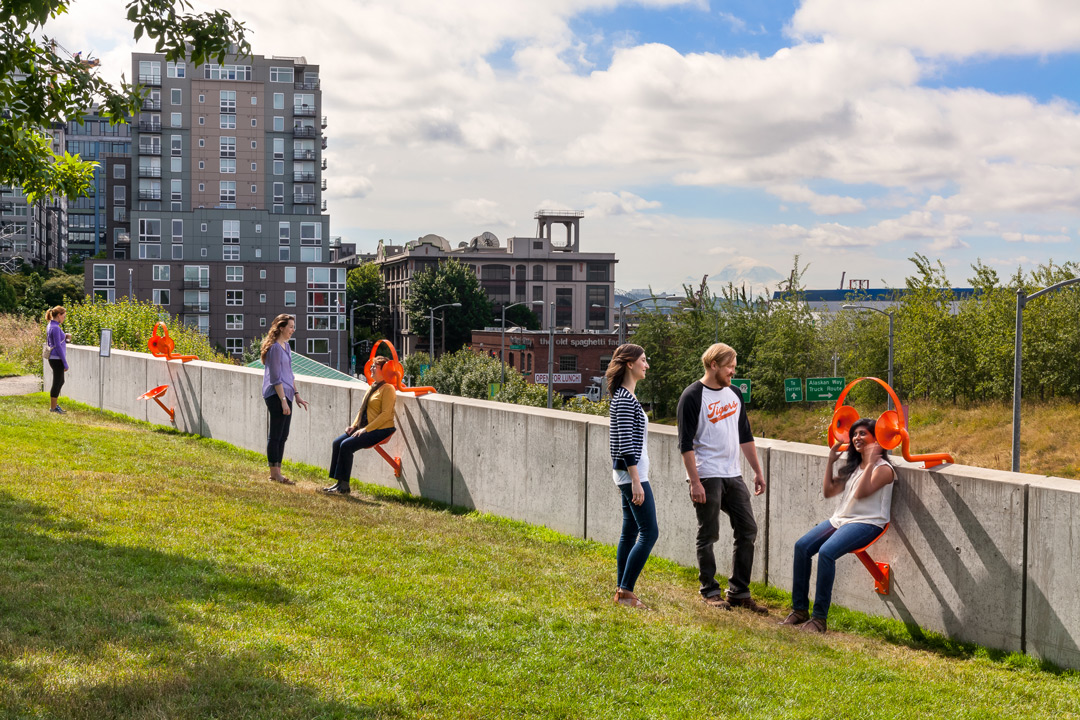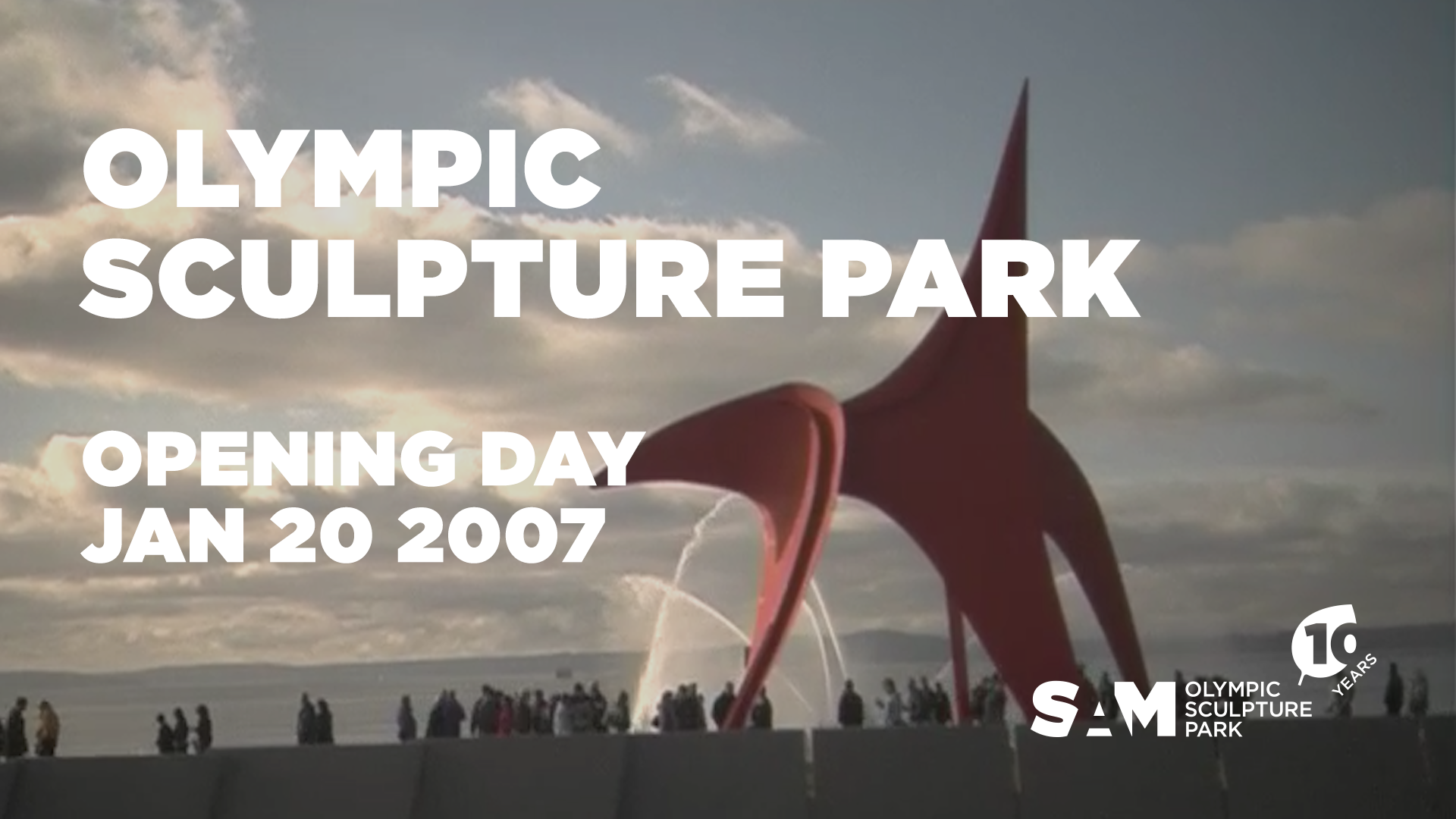“How does art come into being? Out of volumes, motion, spaces carved out within the surrounding space, the universe.” –Alexander Calder
Read these words on the silver plaque as you stand beneath Calder’s The Eagle, in the Olympic Sculpture Park, and they resonate deeply. The bolts and bends in its blazing, red steel prompt you to envision the way its parts came together in the artist’s mind. This year, as we celebrate the 10th anniversary of the Olympic Sculpture Park, Calder’s words become especially poignant. Looking out at the park and the surrounding slices of Seattle framed by The Eagle’s wings and legs—the art, the land, and the architecture—we are reminded of the way people came together to build this unique green space in the downtown corridor.
The park’s true beginnings go back to 1996, when SAM trustee, collector, and arts philanthropist Jon Shirley saw the potential for something greater. “My late wife Mary and I were looking at our outdoor sculpture collection around the yard of our home and wondered where it might end up one day. . . . As collectors, we visited many sculpture parks around the world and thought, why not here?”
They shared their idea with arts benefactors and SAM trustees Virginia and Bagley Wright, as well as SAM’s Director from 1994–2009, Mimi Gardner Gates. Later that year, Gates brought those conversations with her on a fly fishing trip in Mongolia with a group of twelve women, where she got to know Martha Wyckoff, volunteer and national board member at the Trust for Public Land. Following a helicopter crash that left Gates, Wyckoff, and the rest of the group unharmed but stranded in the steppes of Mongolia, the two women found themselves discussing a mutual interest in civic engagement that spoke to the aspirations of both organizations: free, public green spaces and art for Seattle’s community. As Martha Wyckoff explained, “Community can include everyone in Seattle and anyone who comes to visit. As we developed the project, we realized it also included the salmon, and the plants, and the future, by making sure there’s more green, natural settings in the downtown core for all to enjoy. Where else has a major city art museum created salmon habitat in partnership with a national nonprofit land conservation group?”
After Gates and Wyckoff returned to Seattle, they began discussing possible sites, along with the Shirleys, the Wrights, and Chris Rogers from the Trust for Public Land, who went on to manage the sculpture park project on behalf of SAM. Rogers and Wyckoff had been mapping park possibilities in King County for over a year and kept coming back to a strip of land on the waterfront beside Myrtle Edwards Park. Still contaminated by its former life as a site for petroleum storage, the space was far from inspiring. Yet, when the team visited, something sparked. Gates explained, “It was much lower, it was fenced in, and people were living on the edges. Plus, it had a railroad track running through it. . . . Jon [Shirley] was particularly visionary in terms of really being able to see what it could be. I was very enthusiastic about the idea of space on the waterfront that was open and free. And so, we started running.”
The Trust for Public Land was familiar with brownfield restorations from their previous projects, so they took the lead on the complex negotiations required to acquire and clean up the site. But the park as we know it fully came to be through architects Marion Weiss and Michael Manfredi’s submission to a competition for its design. Gates explained, “We didn’t have a set vision until Marion and Michael presented their plan. Their design went over the road and the railroad tracks, incorporating and integrating the infrastructure of the city into the park while creating a space that was tranquil, quiet, and a place you wanted to be—that vision was critical to what the park has become.”
During the years that passed since the park opened on January 20, 2007, the sculptures, the design, the plants and all of the activities that happen among them have become embedded into the city that has grown around it. Skyscrapers bloom around the thick carpet of green and open span of sky while hundreds of container ships and ferries, otters and seals, pass through the Puget Sound below. When you scan the downtown skyline from the West Seattle shore, between CenturyLink Field’s white arches and the Space Needle’s hovering disc, the park’s patch of green and The Eagle’s spot of red stand out, too. Inside the park, a universe of sorts was carved, by two organizations and many individuals—a universe that continues to be shaped by Seattle itself.
In the months ahead, we will continue reflecting on the Olympic Sculpture Park’s history with an in-depth look at the permanent and temporary works of art, the landscape, the programming, and more. We hope our memories of the last 10 years bring to mind some of your own and, even better, that you’ll visit in 2017 to create new experiences during the park’s 10th year.

